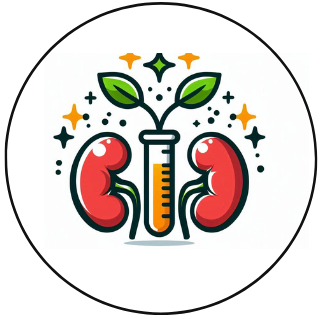Tips to Manage Nausea and Loss of Appetite, Due to Kidney Disease
1. Eat Small, Frequent Meals
When nausea strikes, large meals may feel overwhelming. Instead, try eating small, frequent meals throughout the day. This can help reduce the feeling of fullness and make it easier to consume enough calories.
- Tip: Focus on nutrient-dense snacks such as nuts, yogurt, or smoothies.
These kidney-friendly protein shakes are a great way to get nutrition you need without feeling nauseous.
2. Opt for Cold or Room-Temperature Foods
Hot, heavy foods can sometimes exacerbate nausea. Cold or room-temperature meals may be more tolerable. Try dishes like salads, cold sandwiches, or smoothies to avoid strong smells that might trigger nausea.
- Tip: Incorporate kidney-friendly ingredients such as cucumber, apples, and low-potassium greens.
We suggest portable blenders for making smoothies or salad containers to encourage eating lighter meals to ward off nausea.
3. Avoid Strong Smells and Flavors
Certain strong odors and flavors can intensify nausea. If you’re feeling nauseated, steer clear of pungent foods like garlic, onions, or spicy dishes. Stick to bland foods like rice, pasta, or toast when nausea is at its worst.
- Tip: Sipping on ginger tea or sucking on ginger candy can help ease nausea.
We find ginger chew for nausea relief on the go and ginger tea for when you have time to steep a cup to be effective.
4. Stay Hydrated but Manage Fluid Intake
Dehydration can worsen nausea, but for people with kidney disease, managing fluid intake is critical. Sip water or suck on ice chips throughout the day to stay hydrated without overwhelming your kidneys.
- Tip: If you’re on a fluid restriction, work with your healthcare provider to monitor your fluid intake.
Use a hydration tracking water bottles that allows you to keep track of how much you drink throughout the day.
5. Try Anti-Nausea Remedies
For some, natural remedies can help alleviate nausea. Ginger, peppermint, or acupressure wristbands may provide relief without the need for medication. However, always check with your healthcare provider before trying new supplements or remedies.
- Tip: Keep a stock of ginger chews for on the go and ginger tea for when you have time to steep a cup.
Some prefer using an acupressure wristband or essential oils that help combat nausea naturally.
6. Use a Kidney-Friendly Meal Plan
If your loss of appetite is related to difficulty planning meals, consider using a kidney-friendly meal plan. These meal plans are designed to meet your dietary needs while considering common kidney disease restrictions, such as limiting potassium, phosphorus, and sodium.
- Tip: Work with a renal dietitian to ensure you’re getting the nutrients you need while avoiding foods that could make your symptoms worse.
Meal planning guides will give you kidney-friendly ingredients and recipes.
Coping with Appetite Loss
Appetite loss can lead to unintentional weight loss, which is a serious concern for people with kidney disease. Here are additional ways to encourage eating when you’re not hungry:
- Eat calorie-dense foods like avocados, nuts, or olive oil to ensure you’re getting enough calories in smaller portions.
- Add healthy fats to your meals, such as drizzling olive oil over vegetables or adding nut butter to snacks.
- Use herbs and mild spices to enhance flavor, making food more appealing without overwhelming your senses.
When to Seek Help
If nausea and loss of appetite persist or worsen, it’s important to seek help from your healthcare provider. They may adjust your medications, suggest anti-nausea treatments, or refer you to a dietitian for personalized meal planning. Left untreated, severe nausea and appetite loss can lead to malnutrition and further complications in kidney disease management.
Conclusion
Dealing with nausea and loss of appetite is challenging, but with the right strategies, you can manage these symptoms while maintaining a healthy diet. Incorporating small, frequent meals, choosing cold foods, and using natural nausea remedies can help you cope. Always consult with your healthcare provider before making significant changes to your diet or trying new supplements.
By taking a proactive approach, you can minimize discomfort and stay on track with your kidney health goals.
Recap of items to help us manage nausea and appetite:
- Kidney-friendly protein shakes for kidney health
- Portable blenders for making smoothies
- Ginger chews and ginger tea for nausea-relief teas
- Essential oils to curb nausea
- Hydration tracking bottles
- Acupressure wristband
- Kidney-friendly meal planning guide
Many of the links in this article are affiliate links. Purchasing through an affiliate link adds 0 cost to you. It may allow kidneyfreshfuel.com a small commission, which allows us to continue to bring you quality information.

